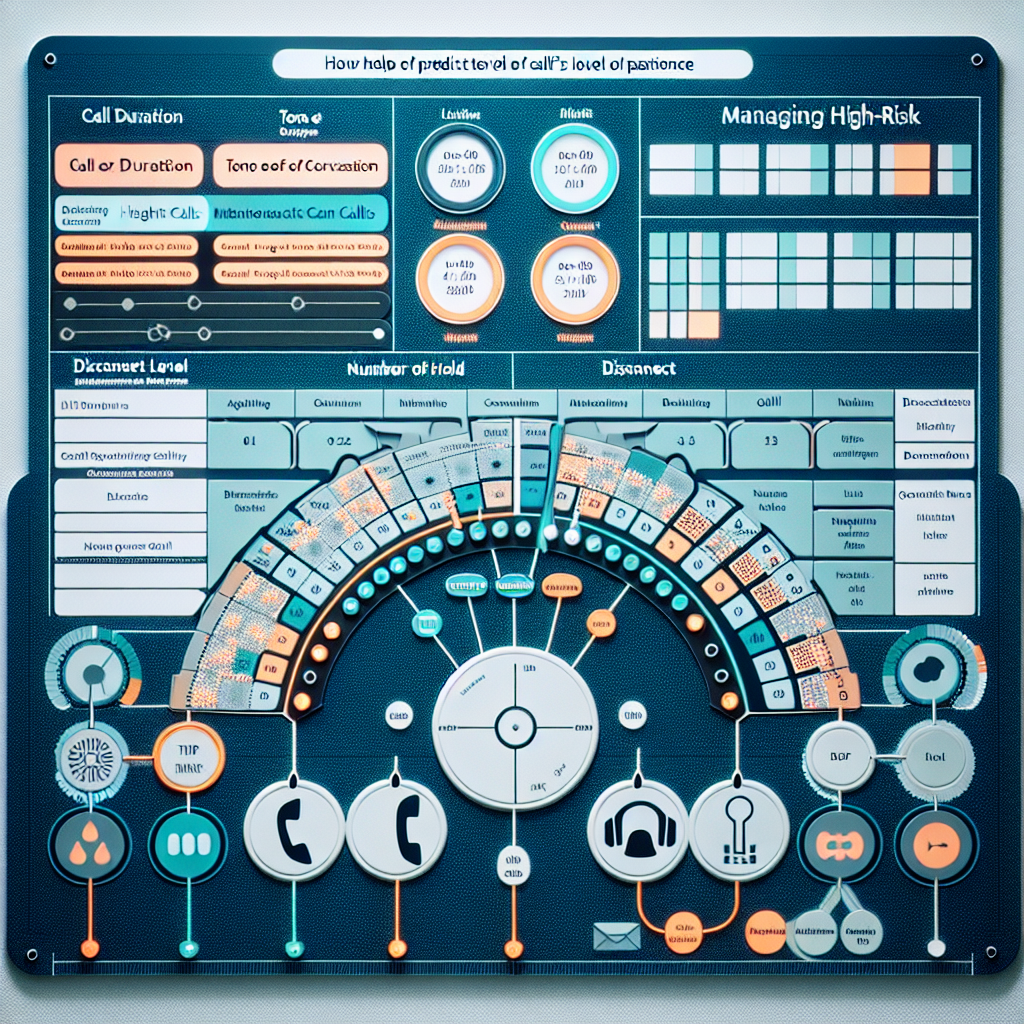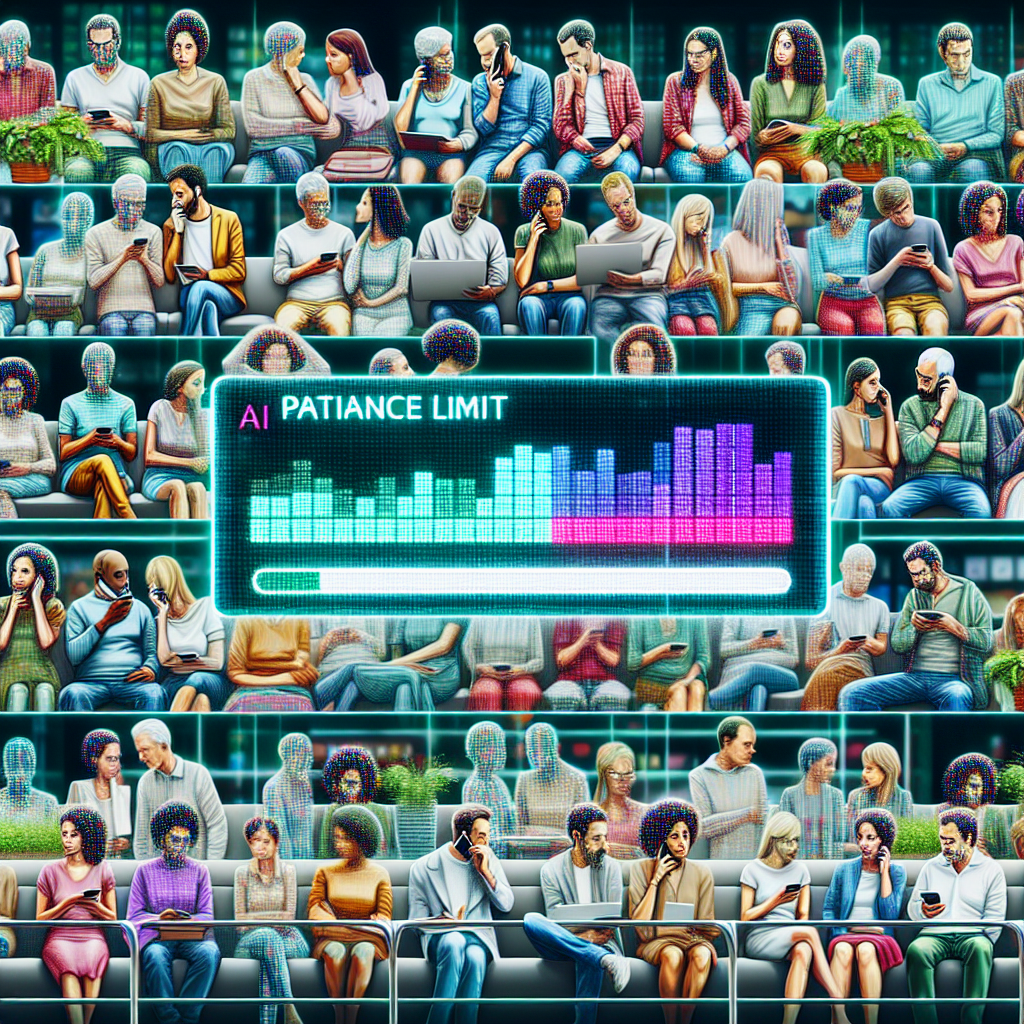
In today's fast-paced digital world, Automated Caller Patience Prediction emerges as an innovative solution to efficiently manage high-risk disconnect calls. This technology is essentially an AI-driven system designed to determine how long a caller will wait in a queue before he or she hangs up. Let's delve into the intricacies of this predictive feature and understand its significance in enhancing customer service experiences.

Caller patience prediction is achieved through the power of advanced AI algorithms. These proprietary algorithms analyze numerous factors from a caller's historical data, including call duration, time of the day, the number of events during a call, and even the tone of voice, amongst others. Accurate prediction allows customer-centric organizations to optimize resources, streamline call operations, and most importantly, enhance client satisfaction.
The importance of managing disconnect risks in customer service cannot be overstated. A dropped call is not merely a lost call; it signifies a potential loss of revenue, customer trust, and brand reputation. The sophistication of the Automated Caller Patience Prediction technology ensures that the system identifies high-risk disconnect calls and priority is accordingly adjusted to preemptively engage these callers, reducing drop rates and enhancing overall customer experience.
In conclusion, the application of AI algorithms in predicting caller patience marks a significant stride in customer service management . As businesses worldwide continue to harness the power of AI, this predictive strategy can go a long way in creating sustainable relationships with customers and driving enhanced service experiences.
Artificial Intelligence (AI) has reinvented customer service by introducing a breakthrough advancement called Automated Caller Patience Prediction. This technology uses sophisticated AI algorithms to predict a caller's patience level during a customer service call, thereby identifying high-risk disconnect calls that can potentially adversely impact customer satisfaction and retention. The purpose of this section is to provide you with an understanding of the underlying technology that powers this innovative concept.
At the crux of patience prediction are advanced AI models, predominantly the Deep Neural Networks (DNNs). DNNs are highly complex and self-learning algorithms designed to approximate unobserved probability distributions that can map relationships between inputs (in this case, caller behaviour data) and outputs (the patience levels). The more data these models process, the better they become at making accurate predictions.
A crucial aspect of patience prediction is the real-time data processing and analysis of call details. In essence, the AI models continually learn and adapt by processing a vast range of data, from speech patterns and call durations to the time of the day. Added to this, the models also recognize patterns from the user's past interactions to make accurate predictions about their likely actions.
Furthermore, predictive analytics plays a significant role in caller patience prediction. Predictive analytics leverages statistical techniques, such as machine learning and data mining, to analyze current and historical facts and make future predictions.
In summary, automated caller patience prediction relies on complex AI models and predictive analytics to process and analyze real-time data from calls. By identifying high-risk disconnect calls, it significantly enhances the customer service experience, ensuring that callers receive timely, appropriate, and satisfactory responses.
In the fast-paced modern world, Customer Service is evolving and adapting rapidly to keep pace with the changes. Artificial Intelligence (AI) technology plays a critical role in this evolution, integrating seamlessly into existing customer service frameworks to offer enhanced call management solutions. One innovative application of AI in this field is Automated Caller Patience Prediction. This inventive AI concept has been designed to maintain service quality by predicting and managing high-risk disconnect calls, thus preventing premature call termination.

Understanding caller patience and the likely disconnect risks is an integral component of sustainable call management. This capability empowers the service agents to improve engagements and retain customers. By leveraging machine learning algorithms and predictive analytics, AI can analyze call data in real-time to detect patterns and predict caller behavior. It presents insights about caller tolerance levels and the likelihood of a call getting disconnected due to excessive hold time. Here, drawing from an extensive conversational data repository, the AI model can predict the optimal time to engage the caller.
This AI-driven methodology is not just about predicting disruptive call terminations, but also about enabling proactive customer service. With the support of an automated system, agents can address and resolve issues faster, enhance service efficiency, and improve customer satisfaction levels. The integration of AI into the customer service framework revolutionizes the company’s approach by shifting from the conventional reactive mode to a more proactive customer relationship management.
Adopting Automated Caller Patience Prediction is a futuristic and strategic business decision that reflects a commitment to delivering top-quality customer service. As we head into the era of intelligent customer engagements, this innovative tool could be the game-changer that businesses have been looking for.
The advent of Automated Caller Patience Prediction has opened a new era of managing high-risk disconnect calls. It is a revolutionary technology that predicts the patience level of callers, enabling businesses to strategize their approach towards customer retention and satisfaction.
One striking success story involves a leading e-commerce industry, Example1. Using automated caller patience prediction, they were able to identify and categorize their callers based on their patience level. This predictive algorithm facilitated efficient allocation of callers to the agents matching the caller's profile, resulting in an increased customer satisfaction index by 30%.
Similarly, in the banking sector, Example2, a renowned financial institute, unveiled impressive results with the adoption of this technology. By deploying the patience prediction system, the bank was able to address high-risk disconnect calls with appropriate urgency, thereby averting caller dropouts. The effect was a marked decrease in average customer waiting time, which rose their customer retention rate by a staggering 25%.
The success tale of the healthcare industry is equally noteworthy. Example3, a premier healthcare organization, used the caller patience prediction to streamline patient care during the prevalent pandemic situation. The adoption of this technology mitigated the risk of disconnecting high-priority calls, thus enhancing patient satisfaction during a critical time.
In conclusion, whether it's the e-commerce, banking, or healthcare sector, the fruits of implementing Automated Caller Patience Prediction are universally apparent. Regardless of the industry, this predictive technology is influencing customer satisfaction and retention positively, clearly exhibiting its potential in managing high-risk disconnect calls.
Looking ahead, the future trends in AI and Call Management are bound to revolutionize customer service industries. As companies continue to invest heavily in AI technologies, predicting and managing high-risk disconnect calls will ideally become a more efficient and accurate task.

One such development is the Automated Caller Patience Prediction. As suggested by its name, this technology focuses on identifying the ‘patience level’ of callers and efficiently manages those who are at a higher risk of disconnecting their calls. The practical application of AI in customer service has greatly improved response times and customer satisfaction rates, as well as reduced workload for customer service representatives.
Advanced AI learning models are expected to enhance the sophistication of patience predictions. Predictions will become so exact that calls can be automatically routed to representatives best equipped to handle the caller's issue, avoiding unnecessary wait times. In a high-stress environment like a call center, this could make the difference between a lost customer and a resolved issue.
AI algorithm improvements are also a hot topic. As Pew Research reports, algorithms are becoming more powerful and could soon help predict why a caller might hang up, allowing preemptive measures to be taken.
As the industry continues to push toward a fully AI-integrated future, we should expect the seamless incorporation of these technologies into existing infrastructures. Technological advancements in this field promise immense potential to streamline call management and resolve customer issues more efficiently than ever before.
Start your free trial for My AI Front Desk today, it takes minutes to setup!








